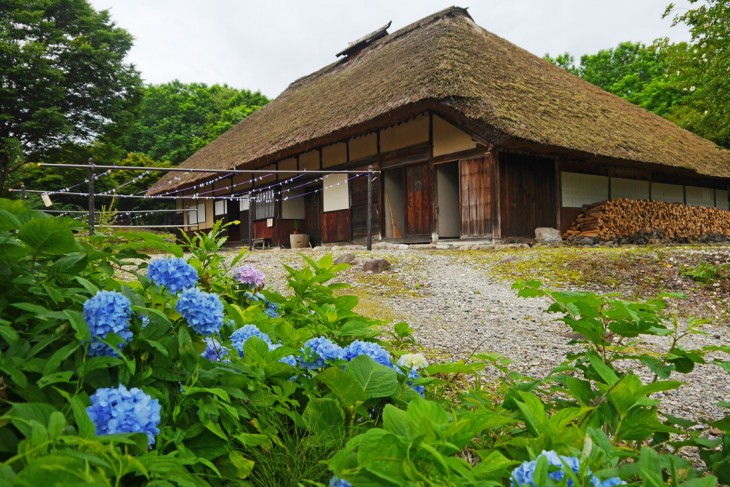
I recommending a visit to the Oku-Aizu Museum to anybody traveling around Aizu-Tajima area, especially to those who might have visited the Aizu-Tajima Gion Festival. It takes 15 minutes to reach Oku-Aizu Museum from Aizu-Tajima Station if travelling by car, and 30 minutes if using public transport.
OLD JAPANESE-STYLE HOUSES
Like Fukushima City Minka-en Open Air Museum in Fukushima City, Oku-Aizu Museum is home to a number of kominka (古民家) – which translates as ‘old Japanese-style houses‘ – which, over the years, have been brought to and maintained at the museum.

These houses are spread out across a small park – all of them a short walk away from the main museum building. The park is really scenic, especially at the end of July when I visited, which is when the hyacinth were in bloom.
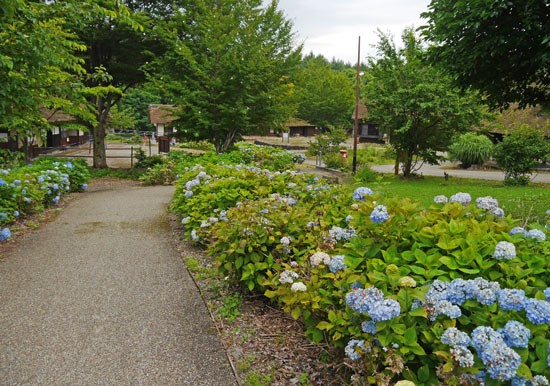
A majority of the buildings that stand in the grounds of Oku-Aizu Museum are former residences of local farming families. Here’s some information about a majority of the buildings on display, as well as ideas for how to spend your time at the museum.
FORMER IMATA FAMILY FARM HOUSE

The Former Imata Family Farm House is the oldest residential building at Oku-Aizu Museum, dating back to the early 18th century. If you step inside, you’ll see that half the flooring is covered in tatami, while half is laid bare. This is because the house was used as both a home and also a workspace, and therefore there need to be an area to do farm-related duties. Due to the incredibly heavy snowfall in winter, it was important for as much work as possible to be done inside the house.
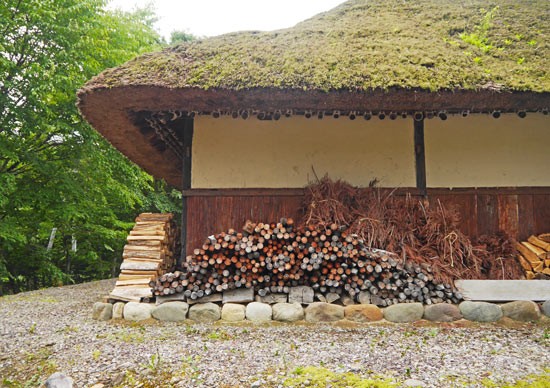
DYE WORKSHOP (FORMER SUGIHARA FAMILY FARM HOUSE)
The Dye Workshop at the Former Sugihara Family Farm House is probably my favourite old Japanese-style building at the museum. This dye workshop dates back to the late 18th century. It was used as a place for dyeing fabric from the mid-Edo Period (1800s) through to 1965. Visiting this house, you can really get a feel for how it must have been to work here hundreds of years ago.
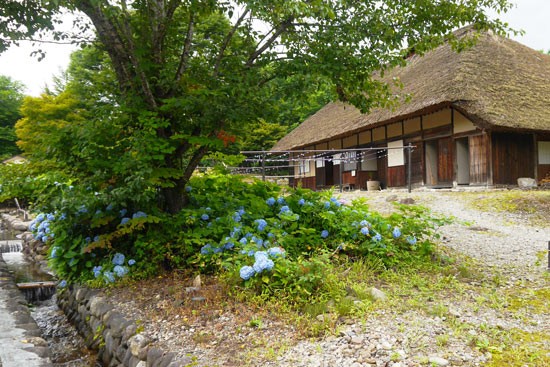
Aizu is particularly well known for its Aozome 藍染め, or ‘indigo dye’. The dye was often used on Aizu Momen (the name used to refer to cotton made in Aizu) and other locally-produced fabrics. The dye was also used for dying banners to be used at the nearby Gion Festival.

One very special thing about Oku-Aizu Museum is that visitors actually get a chance to try out traditional techniques for dyeing fabric with indigo in this very building! You can do a tie-dye experience or – if you’ve got a bit more time – try out stencil dyeing (which has to be done over 2 days). Visitors coming in a group of 5 or more people can take part in these activities from May to October every year.
I’d recommend contacting the museum in advance in order to increase the chances of staff being present on the day who’ll be able to help explain the process to visitors who don’t understand Japanese.
WOODCRAFTSMAN HUT
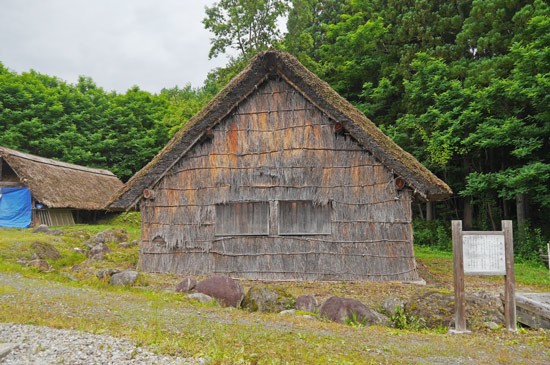
This hut was built in the late 17th century, and was used by wood craftsmen travelling in local woods in order to gather materials for producing their products. Many wood craftsmen from Oku-Aizu would craft and shape their wood so that it could be used as Aizu Lacquerware in the future. See here for more about Aizu Lacquerware!
I really loved the ‘hairy’ look of this hut, so I had to include this photo in this article! I’m guessing the thatched roof and sides of the building were covered in straw to prevent damage from heavy snow that falls during this area in winter.
SANNOJAYA TEA ROOM
One of the things that makes the Oku-Aizu Museum really stand out for me is that visitors can have lunch (or cake & a coffee) in one of the old Japanese-style houses! Sannojaya Tea Room was originally used as a tea room before being moved to the museum and it continues to be used to entertain guests to this day.
I love the open-plan design of the building – it’s very easy to relax here, sitting on the tatami, gazing out at the museum park. The food and drink is really yummy. I’ve been twice now, and in particular, I recommend the sake lees cheese cake! Please check Google Maps for the cafe's opening hours.
As of 2023, the Sannojaya Tea Room is temporarily closed. We apologize for the inconvenience.
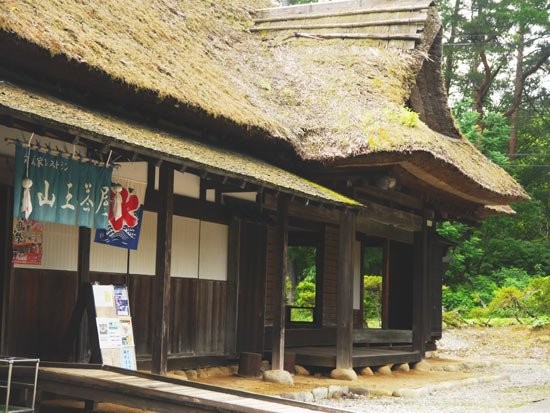
INSIDE THE MAIN EXHIBITION HALL
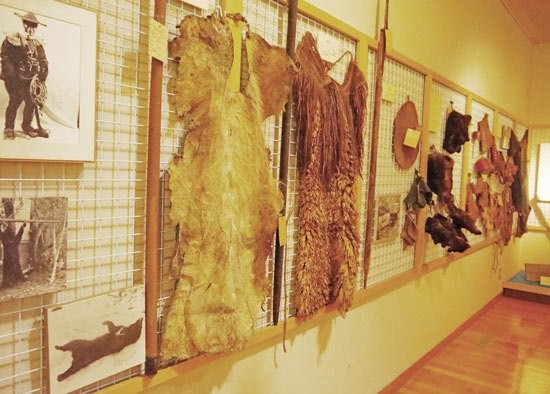
It’s not just the old Japanese-style houses outside that are fascinating, there are also so many interesting artefacts to see inside the main exhibition hall. Over the years, the museum has collected over 24,000 items – over 5,000 of which are considered as Nationally Important Cultural Items – and there are 3,000 on display to visitors.
The main exhibition hall gives visitors the opportunity to learn about life in Oku-Aizu. The items on display really help make everything come to life – from the important roles that wood craftsmen and merchants played in local society and they went about their daily lives, to the ways that the people of Oku-Aizu have adapted to the harsh winter conditions of living in Oku-Aizu / Minamiaizu.
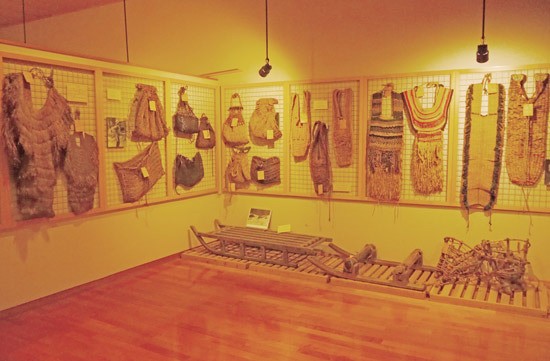
Even though there are no English signs at the museum as of yet, a lot can be picked up from taking your time to look around the museum and looking at the items on display.
VISITING OKU-AIZU MUSEUM
Opening Hours:
- 9:00-16:00.
- The museum is open all-year with the exception of the Japanese New Years Holidays.
- More Information here (Automated Translation Available)
Access:
- 15 minute (Approx. 1km) walk from Aizu Sanson Dojo Station on the Aizu Railways Line. This train station can be directly reached by Asakusa Station, Aizu-Tajima Station and Aizu-Wakamatsu Station.


